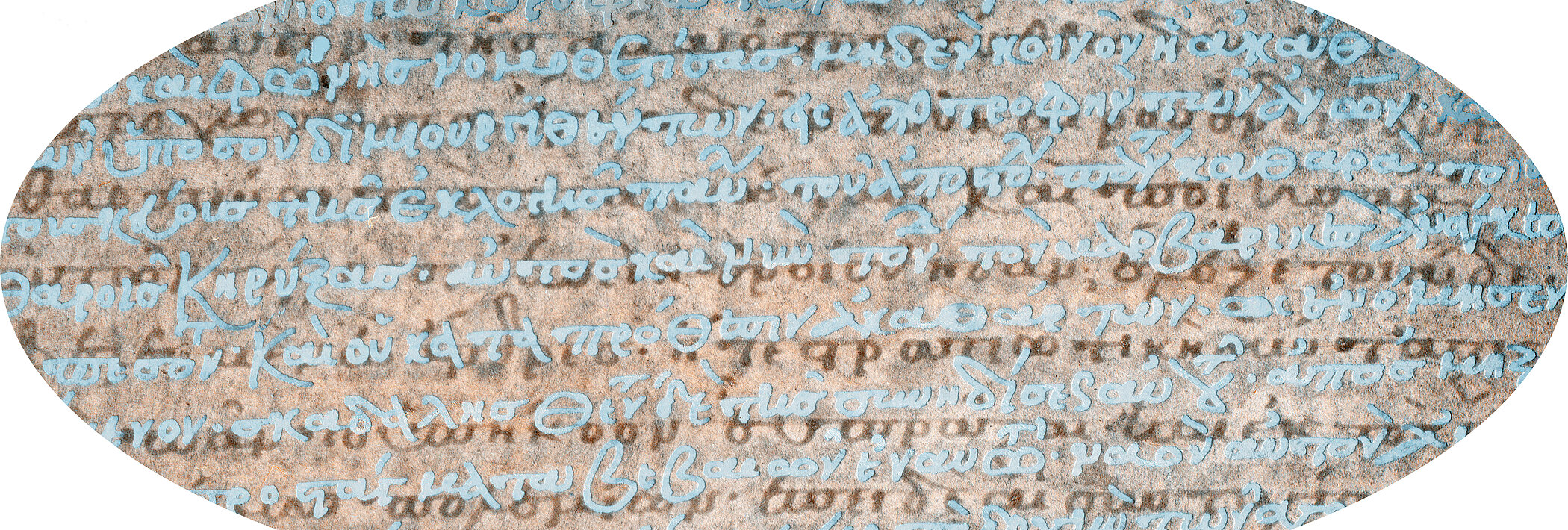Scythica Vindobonensia

♦ ♦ ♦ History ♦ ♦ ♦
♦ In 2007–2009, during a research project of the Austrian Academy of Sciences (ÖAW) on Greek palimpsests of the Austrian National Library in Vienna, Jana Grusková discovered and partly deciphered fragments of an unknown ancient text in eight pages of a medieval (Byzantine) manuscript (Codex Vind. hist. gr. 73) and identified them as probably coming from Dexippus’ Scythica (see Untersuchungen, 2010, 51–53). The text, written in an 11th-century Greek script, is hardly legible with the naked eye since the ink was washed off the parchment in the 13th century and the valuable writing material was reused for a new text (a so-called palimpsest).
♦ Within the FWF project "Important textual witnesses in Vienna Greek palimpsests" of the Austrian Academy of Sciences (2012–2015, project leader: Otto Kresten), Jana Grusková together with Gunther Martin, a specialist on Dexippus, deciphered and examined 60% of the palimpsested text, which they named the Scythica Vindobonensia or Dexippus Vindobonensis, and published six pages (of the eight in total) in a provisional transcription. Cutting-edge methods of digital recovery of erased writings (multispectral imaging and special image processing) were applied in the cooperation with Early Manuscripts Electronic Library (EMEL) to reveal the original manuscript.
♦ Another FWF project, "Scythica Vindobonensia", followed in 2015–2020 and was conducted at the University of Vienna (Ancient history, project leader: Fritz Mitthof) and the Austrian Academy of Sciences (Byzantine research, supervisor: Otto Kresten). Jana Grusková and Gunther Martin continued their work on further deciphering, examining and editing the text. A critical edition (editio princeps) with a philological and historical commentary is currently being prepared. Additional state-of-the-art methods of digital recovery, including both spectral imaging and XRF element mapping, were applied to make the previously illegible parts of the palimpsest visible. In addition, extended studies on selected historical, prosopographical, epigraphical and geographical aspects were published by Fritz Mitthof and Olivier Gengler within this project. Moreover, scholars from various fields have been invited to explore the new fragments in their historical and historiographical contexts. Important questions have been discussed and settled (“Empire in Crisis”).
♦ The work on the Scythica Vindobonensia alias Dexippus Vindobonensis continues. The critical edition (editio princeps) will be published as soon as the complex process of digital recovery and the decipherment of the faint surviving traces of the erased text, covered by another script, have been completed and the newly revealed passages have been examined. The edition will include a comprehensive commentary on the text and extended studies on the authorship, the language and style etc.
♦ The recovery and revealing of this masterpiece of ancient historiography combines traditional philological and historical methods with cutting-edge approaches of image science and material analysis. The success lies in cooperation between many fields of research.
See: Grusková – Martin – Kresten (2018 [2019]) 69–92